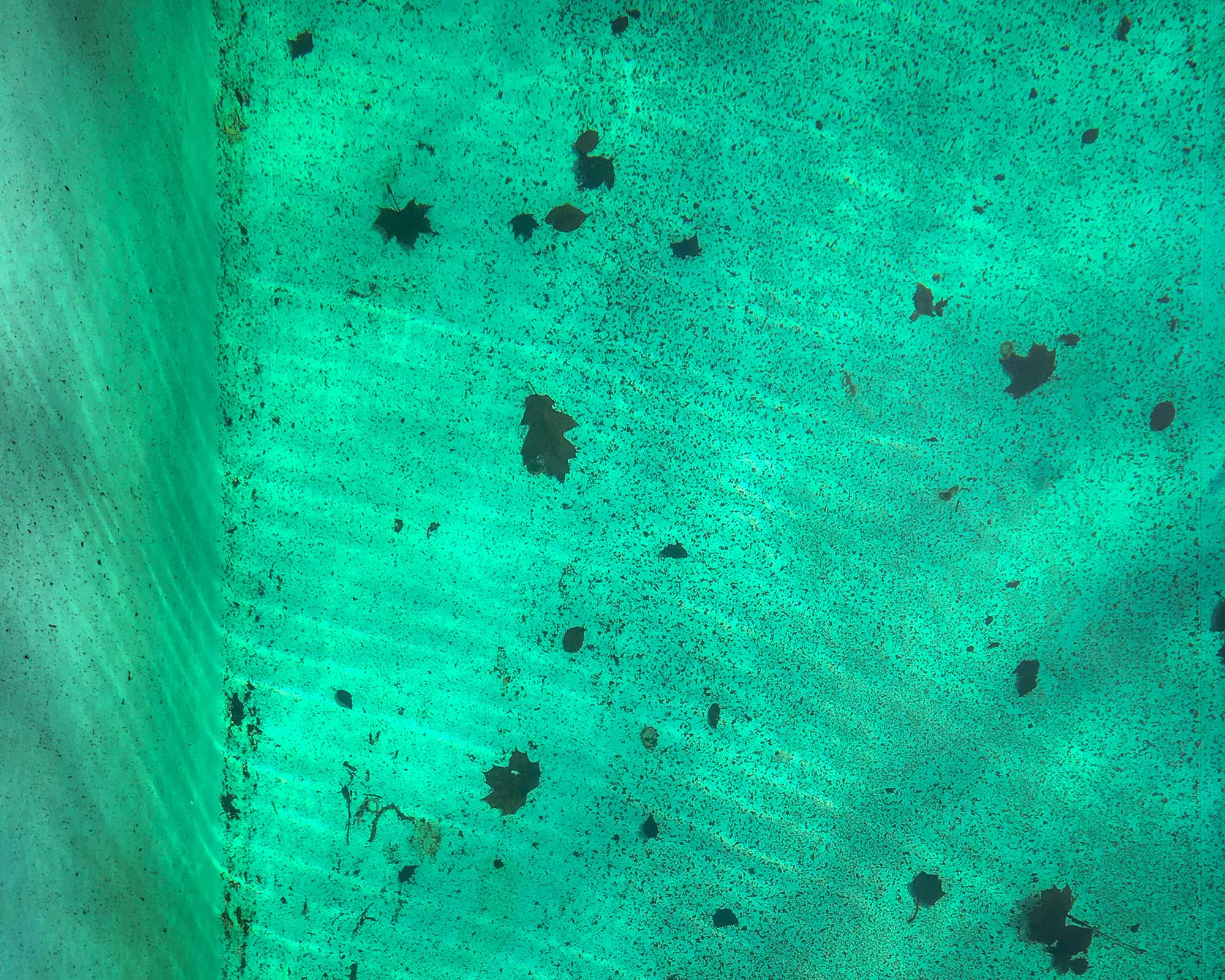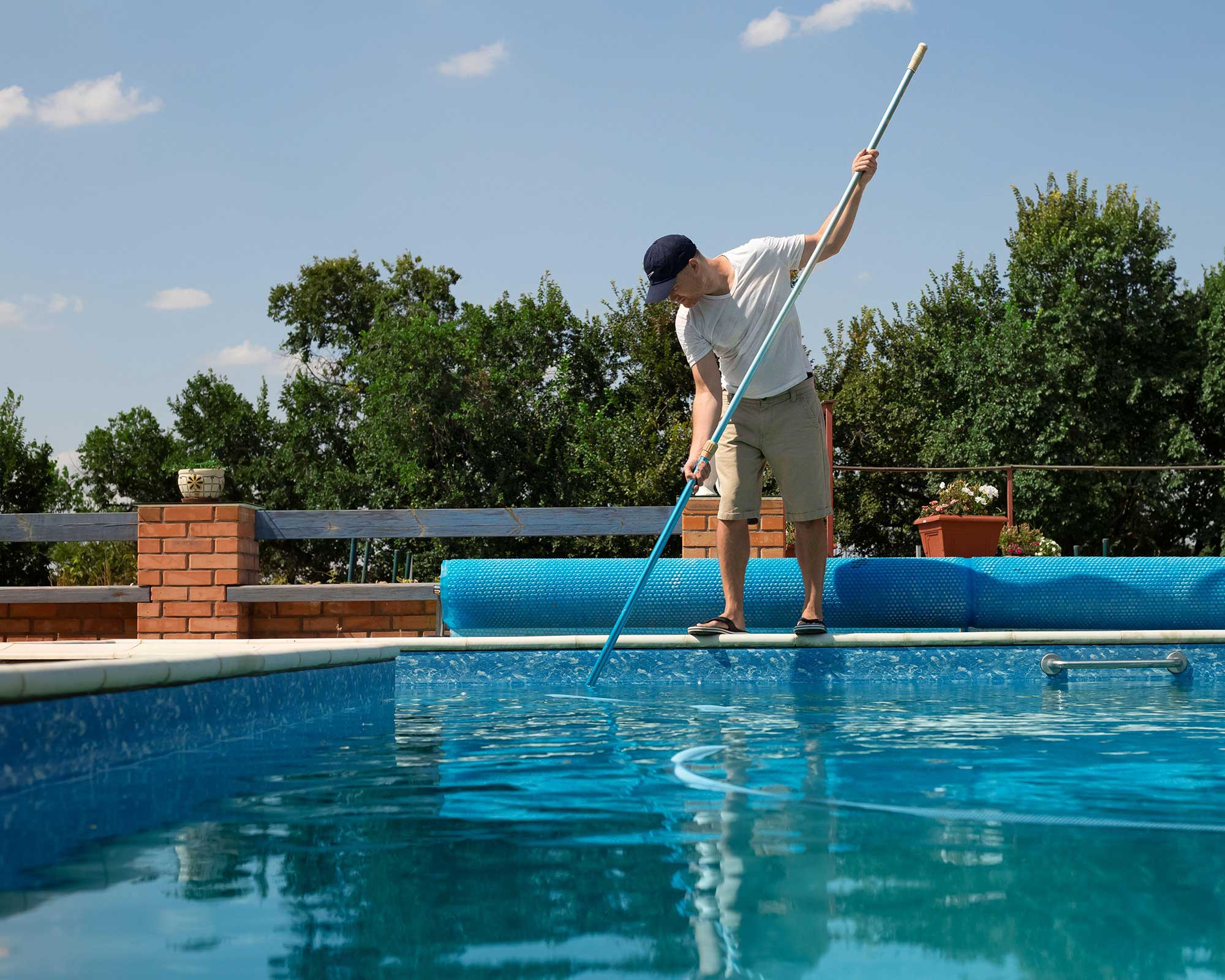Black algae in a pool: simple steps to get rid of it
Tackle black algae in a pool with our tips and get yours looking pristine again


Any homeowner who has noticed black algae in a pool will want to get rid of it as soon as possible. The unsightly growth quickly spoils the appeal of a swim, even in the midst of summer heat. And it's not just about the aesthetics – it can be harmful, too.
If you've brought your backyard pool ideas to life in your plot, you'll naturally want to make the very most of them. With our advice, you'll be able to identify and get rid of black algae in a pool so you can enjoy a healthier, happier swim.
What is black algae in a pool?
Black algae is different from the common green algae that often plagues pools in that it's not technically an algae at all. It's actually a type of bacteria. It's also much trickier to get rid of due to its protective coating and deep roots. As the experts at Swimmingpool.com say, 'simply shocking or adding algaecide to your swimming pool will not kill it.'
In terms of appearance, black algae shows up as clusters of black dots, similar to mold. It tends to form on rough, porous surfaces, such as concrete, and can grow in both sun and shade.
According to Swim University, simply swimming in a pool that has black algae can make you ill. The risk is increased if you accidentally swallow the infected water, leading to various symptoms from nausea to liver damage. So if you spot it, you'll definitely want to eradicate it before hosting your next pool party.

What causes black algae in a pool?
If you've used your pool inflatables or bathing suit in a natural body of water – think lakes, rivers, or the sea – then it's crucial you clean them thoroughly before putting them back in your pool. Not doing so is a common cause of black algae developing.
Black algae can also form as a result of poor pool maintenance. Keeping the chemical levels properly balanced, running your filter for at least eight hours a day, and cleaning it frequently with a brush, pool vacuum, and a regular pool shock treatment will all help to reduce the risk of it forming.

How to get rid of black algae in a pool in 6 easy steps
In our guide on how to get rid of algae in a pool, we explain the steps to tackle the common, green variety. The process of getting rid of black algae is similar, but a little more time consuming.
- Clean or replace the filter. First things first, you'll want to give your pool's filter a good clean – whether that's by rinsing a cartridge filter or backwashing a sand or DE filter. If your black algae infestation is severe, you may wish to replace it completely.
- Balance the water chemistry. Time to get your pool testing kit out to check the pH, alkalinity, and chlorine levels are where they need to be. If not, balance them accordingly. As Swim University explains, this will help the shock treatment work effectively at killing the algae.
- Get scrubbing. Before you shock the pool, though, it's time to roll up your sleeves and get down to some serious scrubbing. Use a stainless-steel-bristled pool brush or, if you have a fiberglass or vinyl pool, a nylon-bristled one. Try to loosen as much of the algae as possible. For particularly tough areas in shallow areas of concrete, gunite, or plaster pools, Swim University recommends using a putty knife, pumice stone, or a 3-inch chlorine tablet broken in half (for the latter, be sure to wear protective eyewear and chemical-resistant gloves).
- Shock the pool and run the pump. There will now be lots of loose algae floating around in your pool, so the next step is to add a pool shock. But as this type of algae is particularly tough, the usual amount of shock won't be up to the job. Swim University says to check the label to see how much you would normally need to add to your pool, then quadruple it. They suggest using calcium hypochlorite shock for the best results. Run the pump for 24 hours after adding the shock so it can circulate.
- Repeat, and if necessary, repeat again. Yep, we told you black algae was tough! In the 24 hours after you've added the shock, brush the walls and floor of your pool a couple more times. Once you've switched the pump back off, clean the filter again. If you can still see black algae, you'll need to shock it again – this time just using double the usual dose. Then repeat the brushing and filter-cleaning process.
- Test the water before your next swim. Hopefully, by now, your pool will be free of black algae. Be sure to test the water levels first to ensure it's safe for swimming before your next dip.


The garden was always a big part of Holly's life growing up, as was the surrounding New Forest where she lived. Her appreciation for the great outdoors has only grown since then. She's been an allotment keeper, a professional gardener, and a botanical illustrator – plants are her passion.
